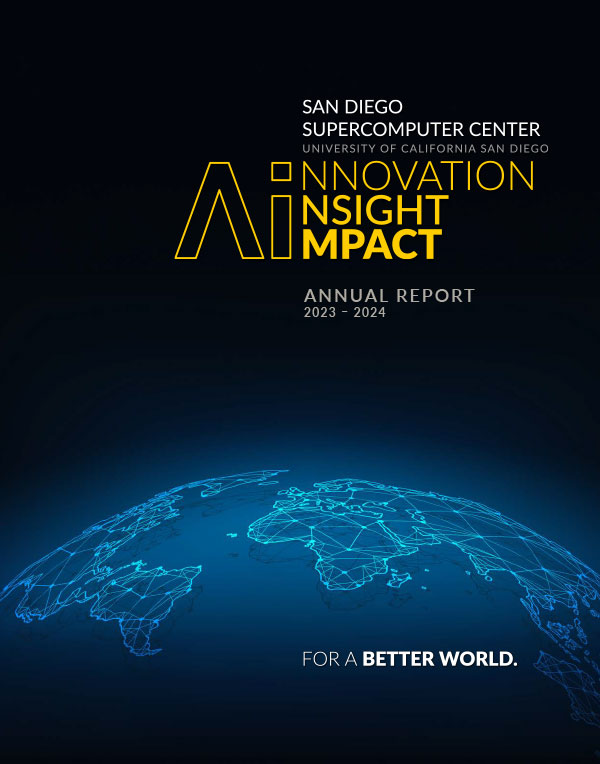Annual Report
SDSC Annual Report 2023-2024
Innovation, Insight, Impact for a Better World
This publication highlights SDSC's accomplishments each year and ongoing leadership, with explorations in artificial intelligence; machine learning; cloud, edge and distributed high-throughput computing; and more.


